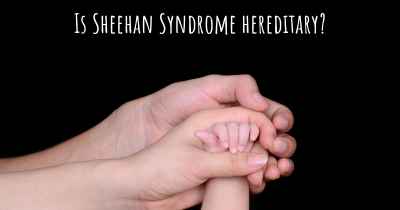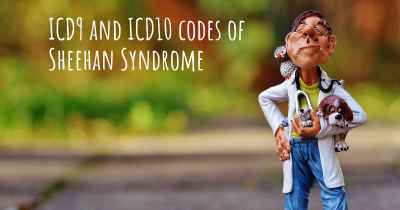What is the history of Sheehan Syndrome?
When was Sheehan Syndrome discovered? What is the story of this discovery? Was it coincidence or not?

Sheehan Syndrome: A Historical Overview
Sheehan Syndrome, also known as postpartum pituitary necrosis, is a rare condition that occurs due to severe bleeding during childbirth, leading to damage or destruction of the pituitary gland. This gland, located at the base of the brain, plays a crucial role in regulating various hormones in the body. The history of Sheehan Syndrome dates back to the early 20th century when it was first recognized and described by Harold Leeming Sheehan, an Irish physician.
Discovery and Early Observations
In 1937, Dr. Sheehan published a landmark paper titled "Postpartum Necrosis of the Anterior Pituitary" in the Journal of Pathology and Bacteriology. He reported a series of cases where women experienced pituitary gland dysfunction following childbirth. Dr. Sheehan's observations were based on his clinical experience and autopsies of deceased women who had suffered from postpartum hemorrhage.
Pathophysiology and Clinical Presentation
Sheehan Syndrome occurs when the pituitary gland is deprived of blood supply during childbirth, leading to ischemic necrosis. The condition primarily affects women who experience significant blood loss during delivery, especially those with pre-existing risk factors such as low blood pressure or anemia. The damaged pituitary gland fails to produce adequate amounts of hormones, resulting in various symptoms.
Recognition and Naming
Following Dr. Sheehan's initial observations, other physicians and researchers began recognizing and studying this unique syndrome. The condition was eventually named after Dr. Sheehan, acknowledging his significant contribution to its understanding. Over the years, advancements in medical imaging techniques and hormone assays have improved the diagnosis and management of Sheehan Syndrome.
Advancements in Diagnosis and Treatment
During the mid-20th century, researchers focused on developing diagnostic tools to identify Sheehan Syndrome. Imaging techniques such as computed tomography (CT) and magnetic resonance imaging (MRI) allowed visualization of the pituitary gland, aiding in the detection of structural abnormalities. Additionally, hormone assays became more sophisticated, enabling accurate measurement of hormone levels in the blood.
As the understanding of Sheehan Syndrome grew, treatment options expanded. Hormone replacement therapy became the cornerstone of managing the condition. Patients with Sheehan Syndrome often require lifelong hormone supplementation to restore hormonal balance and alleviate symptoms. The specific hormones prescribed depend on the deficiencies identified through diagnostic tests.
Ongoing Research and Future Perspectives
While significant progress has been made in the diagnosis and treatment of Sheehan Syndrome, there is still ongoing research to further understand the underlying mechanisms and improve patient outcomes. Studies are exploring potential preventive measures during childbirth, such as optimizing blood transfusion protocols and identifying high-risk individuals. Additionally, advancements in regenerative medicine and stem cell research hold promise for potential future therapies.
Conclusion
Sheehan Syndrome, named after Dr. Harold Sheehan, is a rare condition resulting from pituitary gland damage due to severe bleeding during childbirth. Dr. Sheehan's pioneering work in the 1930s laid the foundation for understanding this syndrome. Over the years, advancements in diagnostic techniques and hormone replacement therapy have improved patient care. Ongoing research aims to enhance preventive strategies and explore innovative treatment options. Sheehan Syndrome serves as a reminder of the importance of recognizing and addressing complications associated with childbirth.








